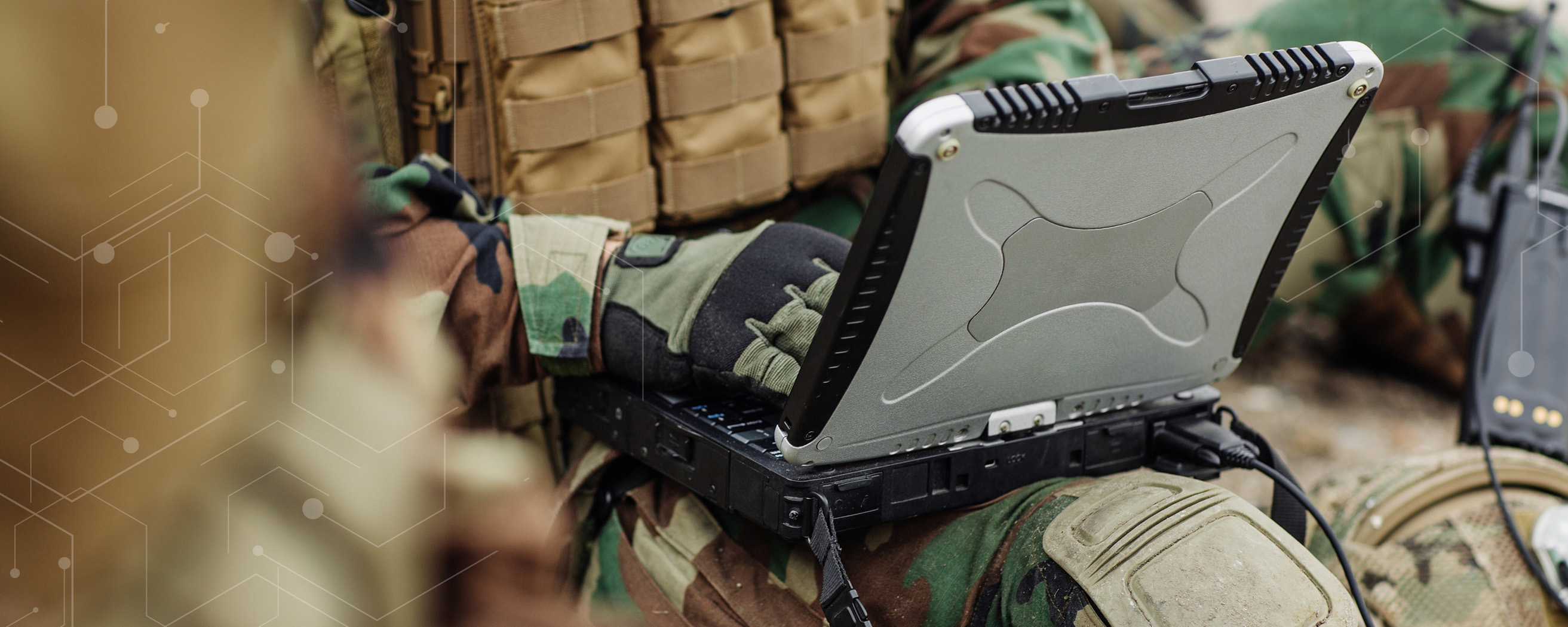Technology and Manufacturing Readiness Levels: Improve Speed to Market for Aerospace and Defense Technologies

Technology Readiness Levels (TRL) and Manufacturing Readiness Levels (MRL) have played a vital role in bringing new aerospace and defense technologies to market for decades. These time-tested frameworks make sure the cutting edge, mission-critical technologies space and military personnel use — and often trust their lives with — are proven and low risk.
TRLs and MRLs may be a new concept for some non-traditional aerospace and defense companies, like those competing in the new space race. But for many aerospace and defense OEMs, these proven frameworks and tools are considered best practices and can offer competitive advantage when bringing a new technology to market.
Understanding and adopting TRLs and MRLs — and having the means to navigate the intensive documentation process that comes with them — can be challenging. That’s where bringing in an experienced partner is useful. As an engineering and manufacturing partner tasked with helping companies get their products and technologies to market, Plexus has found great value in adopting the TRL and MRL frameworks.
What are Technology and Manufacturing Readiness Levels?
Put simply, TRLs provide a robust process for proving the commercial viability of a particular technology before it goes to market, while MRLs assess that the technology, system or component can be reliably manufactured and delivered.
TRL and MRL go hand-in-hand. The Department of Defense Instruction (DoDI) 5000.02, Operation of the Adaptive Acquisition Framework, reinforces the role and frequency of evaluation of technical and manufacturing risk throughout the acquisition life cycle. Manufacturing processes will not be able to mature until the product technology and product designs are stable. And furthermore, they provide all stakeholders, regardless of their background, with a common understanding of the relative maturity and risk of a technology throughout life cycle phases leading to the production decision.

TRL Framework
The TRL framework was first developed by NASA in 1974. And use has expanded to other government agencies, including the Department of Defense (DoD), the European Union (EU), Department of Energy (DOE) and the U.S. Air Force (USAF). TRL framework definitions can vary by government agency. They generally use nine maturity levels to guide a technology’s development cycle all the way from an idea to a fully commercialized product — with 1 being the earliest readiness level and 9 being the most mature technology level.
The U.S. Department of Defense (DoD) TRL framework can be simplified into three main stages: research, development and deployment.
Research
Level 1 – Basic principles observed and reported
Level 2 – Technology concept and/or application formulated
Level 3 – Analytical and experimental critical function and/or characteristic proof-of-concept
Development
Level 4 – Component and/or breadboard validation in laboratory environment
Level 5 – Component and/or breadboard validation in relevant environment
Level 6 – System/subsystem model or prototype demonstration in a relevant environment (ground or space)
Deployment
Level 7 – System prototype demonstration in a space environment
Level 8 – Actual system completed and “flight qualified” through test and demonstration (ground or space)
Level 9 – Actual system “flight proven” through successful mission operations
MRL Framework
The DoD developed the MRL framework, which is considered a best practice for improving major acquisition programs. Manufacturing risk identification and management must begin at the earliest stages of technology development, and continue vigorously throughout each stage of a program’s life-cycle. An MRL assessment, also known as Manufacturing Readiness Assessment (MDA), is performed to:
- Define current level of manufacturing maturity
- Identify maturity shortfalls and associated costs and risks
- Provide the basis for manufacturing maturation and risk management
The MRL framework is a structured evaluation of a technology, component or subsystem that has 10 levels of criteria. These are correlated to the nine TRLs in use and include:
Level 1 – Basic manufacturing implications identified
Level 2 – Manufacturing concepts identified
Level 3 – Analytical and experimental critical function and/or characteristic proof of concept
Level 4 – Manufacturing proof of concept developed
Level 5 – Capability to produce prototype component in a laboratory environment
Level 6 – Capability to produce a prototype system or subsystem in a production-relevant environment
Level 7 – Capability to produce systems, subsystems or components in a production-representative environment
Level 8 – Pilot line capability demonstrated; ready to begin low-rate initial production (LRIP)
Level 9 – Low-rate production demonstrated; capability in place to begin full-rate production (FRP)
Level 10 – Full-rate production demonstrated and lean production practices in place
An essential ingredient to compete.
The fact that TRL and MRL activities are widely adopted by both start-up and established companies in the aerospace and defense industry is a testament to the value they provide.
“Effective management of TRL and MRL activities isn’t just another box to check. It’s critical to the credibility of your business and the viability of your contract bids”
Established defense and aerospace contractors view TRL and MRL activities as paramount to the success of every new product. They know their government customers will scrutinize TRL and MRL documentation and challenge data gaps or discrepancies. More importantly, these companies know that mistakes in TRL and MRL documentation can have major consequences — like delayed deliveries of life-saving systems and failures in the field.
If you’re a start-up or looking to expand into the aerospace and defense sector, effective management of TRL and MRL activities isn’t just another box to check. It’s critical to the credibility of your business and the viability of your contract bids. You may have an innovative new solution developed by a talented design team. But that alone isn’t enough. You need to demonstrate that you have taken your solution through the rigorous TRL and MRL processes to help make sure it’s mission ready.
The value of Technology and Manufacturing Readiness Levels.
Using the TRL and MRL frameworks can help you mitigate risks in every step of the new product introduction process — and help you achieve your ultimate goal of full-rate production at an optimized cost while improving speed to market. What’s more, reducing risk throughout the process can also support mission success and long-term product sustainability.
A proactive risk-management approach can help you progress through your TRL and MRL activities more quickly and avoid issues at later stages.
For instance, supply chain disruptions are a top threat to technology readiness today. You need to make sure the parts or components used in your design will be available, not only for prototyping and low rate initial production (LRIP) but also for full-rate production (FRP) and beyond. Another key challenge is making sure your technologies are properly tested and documented to perform as specified.
From a manufacturing readiness perspective, a key challenge is ensuring you have adequate resources to support your program. The skilled worker shortage continues to hinder industry, with about 8 in 10 design and manufacturers saying the inability to attract and retain quality workers is a top challenge today.
Using capabilities like design for excellence (DFX) analysis can help you get early insights into where risks might exist in your TRL and MRL journey.
DFX analysis uses guidelines based on data from years of product launches and brings in all stakeholders crucial to your launch to identify risks and top costs at every stage of development. Identifying these issues will reduce costly activities like rework and speed your time to market. In some cases, DFX analysis has removed more than 30% of the originally estimated costs of creating defense and aerospace products. Learn more about how DFX analysis can help mitigate risk in your next launch.
Start managing your Technology and Manufacturing Readiness Level journey.
How can a partner help you? To begin with, they can assess and confirm what TRL and MRL stages you’re currently in. Then they can help you progress through each level and help you reach your end goal of producing and deploying your product to your customer.
One important activity a partner can do when they join you mid-journey is reviewing your work to date to help you identify priorities and your next steps. For example, they can assess your technology at a system level and subsystem level to help identify if key aspects of the design have gone unaddressed, which can lead to costly rework later.
A partner can also conduct a manufacturing readiness assessment. This can help you determine if you have the necessary labor, capacity and support in place for your program.
But remember — not all partners are created equal.
If you’d like help evaluating the maturity of your aerospace and defense technology, or need support to bring a new product to market, reach out to our aerospace and defense team. We bring deep TRL and MRL experience, a robust quality-management and traceability system, established Standard Operating Procedure (SOP) structure, and work instructions to help you efficiently progress through all TRL and MRL stages. And ultimately deliver mission-critical products that are optimized for cost and the lowest possible risk.


